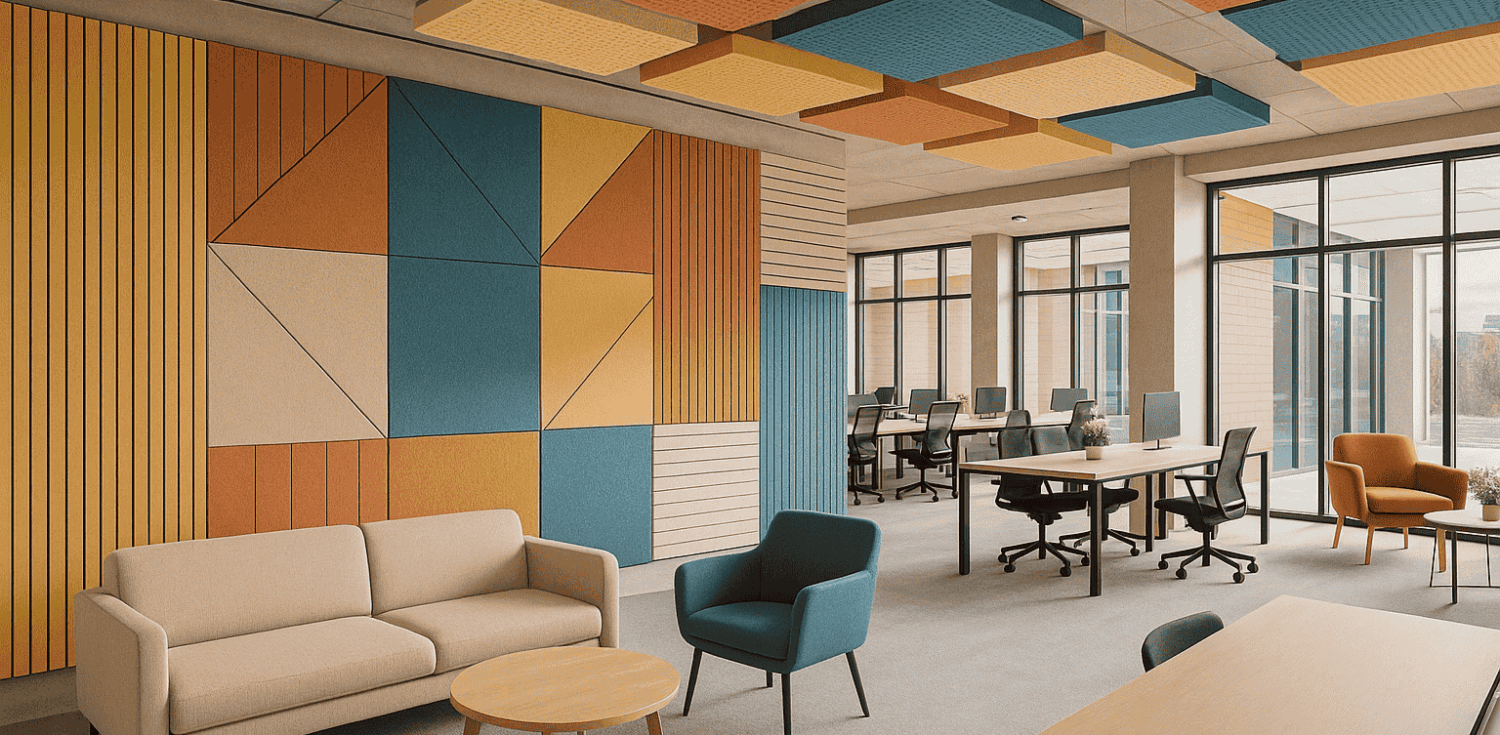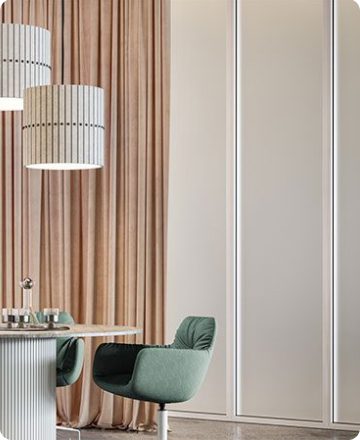Acoustic comfort is no longer considered a luxury in interior spaces. It is a necessity. From classrooms and open-plan offices to libraries and civic buildings, excessive reverberation and noise pollution can affect learning, concentration, and overall wellbeing.
Decorative acoustic panels are a functional solution that combines sound absorption with visual design. These panels are widely used in educational, commercial, and public interiors where acoustic performance and aesthetics are equally important.
This guide explores the benefits of decorative acoustic panels, how they work, and where they are best applied in education, workplace, and public settings.
Where Are Decorative Acoustic Panels Most Commonly Used?
These panels are increasingly specified in both public and private sector projects where acoustics matter. Common applications include:
- Classrooms and lecture theatres
Noise control is critical for student engagement and teacher communication. Panels can be wall-mounted or suspended as ceiling baffles.
- Libraries and study zones
Helps maintain a quiet, distraction-free space for reading and research.
- Open-plan offices and boardrooms
Controls sound spill between desks, reduces echo, and can double as branded or textured wall features.
- Reception areas and meeting pods
Improves privacy and creates a more welcoming environment for staff and visitors.
- Community centres and public halls
Useful in multi-purpose spaces with hard surfaces that reflect sound. Panels can be installed without altering the architectural feel of the building.
You can explore more about interior acoustic applications on our site.
How Do Decorative Acoustic Panels Work?
Sound travels through the air as vibration. When it hits a hard surface, it reflects, creating echo or reverberation. In large or open spaces, this leads to overlapping sound that makes it difficult to hear clearly.
Decorative acoustic panels work by absorbing these sound waves. The fibrous material traps the energy and converts it into low-level heat, reducing the amount of reflected sound in a room.
Unlike standard insulation, these panels are visible and form part of the design scheme. This makes them suitable for areas where both sound quality and aesthetics are important.
What Are the Main Benefits of Decorative Acoustic Panels?
Decorative acoustic panels combine two essential design goals: sound absorption and aesthetic enhancement. They help manage reverberation, speech clarity, and background noise while also acting as visual features.
Here are some of the key benefits:
1. Improved acoustic performance
Absorbs mid to high-frequency sound waves, reducing echo and improving intelligibility.
2. Visual impact
Available in a wide range of styles, colours, and embossed finishes. Panels can be used as wall features, partitions, or ceiling elements.
3. Design flexibility
Can be cut to custom shapes or sizes and used in different orientations. Ideal for feature walls or modular designs.
4. Safer environments
Typically manufactured from non-toxic, fire-rated materials. Many products are also low in VOCs and suitable for sensitive environments.
5. Improved concentration and comfort
In learning and work environments, acoustic panels help support focus and reduce fatigue caused by noisy conditions.
What Materials Are Used in Decorative Acoustic Panels?
Most decorative acoustic panels are made from high-density polyester or PET, which is both durable and lightweight. These panels absorb sound through their porous structure, trapping sound energy and reducing reflected noise.
Common finishes include:
- Embossed textures
Adds depth and visual interest while maintaining acoustic performance. Products such as the EchoPanel embossed series are a popular choice for design-led spaces.
- Printed or coloured surfaces
Used to match school colours, corporate branding, or neutral tones in civic settings.
- Modular tiles
Allow for creative layout configurations or targeted sound treatment zones.
PET-based panels are also known for their recycled content, making them a sustainable choice in education and commercial projects.
What Should You Consider When Specifying Acoustic Panels?
Several factors can influence the selection and placement of decorative acoustic panels:
- Room function
A classroom may need different absorption characteristics than a breakout zone or meeting room.
- Mounting location
Wall-mounted panels are ideal for targeted reflection points. Ceiling baffles are useful in larger rooms with high ceilings.
- Panel thickness and density
Thicker panels tend to absorb lower frequencies. The type of panel will depend on the sound environment and intended outcomes.
- Fire and environmental ratings
Ensure panels meet relevant safety standards and are suitable for use in public spaces.
Working with suppliers who offer cut-to-size services or design and manufacturing support can help tailor solutions to your project needs.
Popular Decorative Acoustic Panels Available in Australia
Several product ranges on the market are specifically designed to offer both acoustic control and visual appeal. Below are some commonly specified options:
1. EchoPanel Embossed Series
Features sculpted surfaces for bold design statements. Available in multiple patterns and colours.
2. EchoPanel Groove Tiles
Modular panels with routed designs that absorb sound and provide subtle detailing.
3. EchoPanel Array and Dune Tiles
Three-dimensional tile sets for walls and ceilings, often used in creative office fitouts.
4. WoodFlex Acoustic Panels
Timber-look panels with acoustic backing, suitable for feature walls or warm interiors. Explore the WoodFlex range for various profiles.
5. Printed PET Panels
Custom-printed panels that can include branding, graphics, or wayfinding elements.
All of the above offer both functional and aesthetic value, with easy installation and low maintenance.
Where Can You Order Decorative Acoustic Panels in Australia?
Mitchell Group supplies a broad selection of decorative acoustic panels for projects across education, commercial, and public sectors. We support interior designers, architects, and fabricators with technical information, sampling, and tailored cutting or finishing services.
Our in-house laser cutting and CNC capabilities allow for complete control over shape, fit, and finish, helping bring your acoustic concept to life with precision.
To get advice on product selection or request a quote, contact our team.




